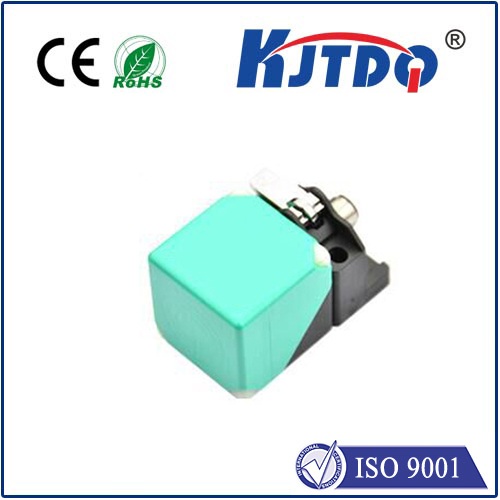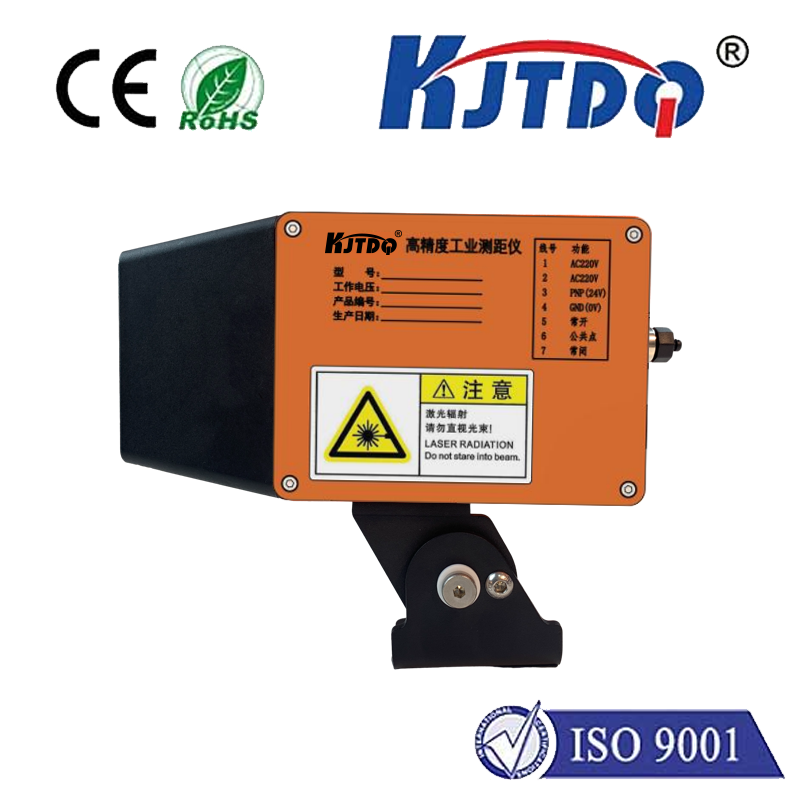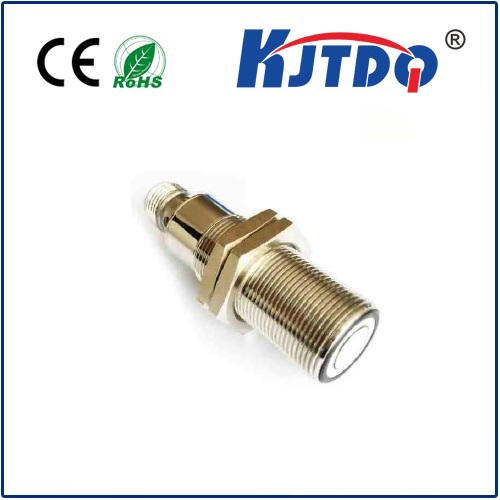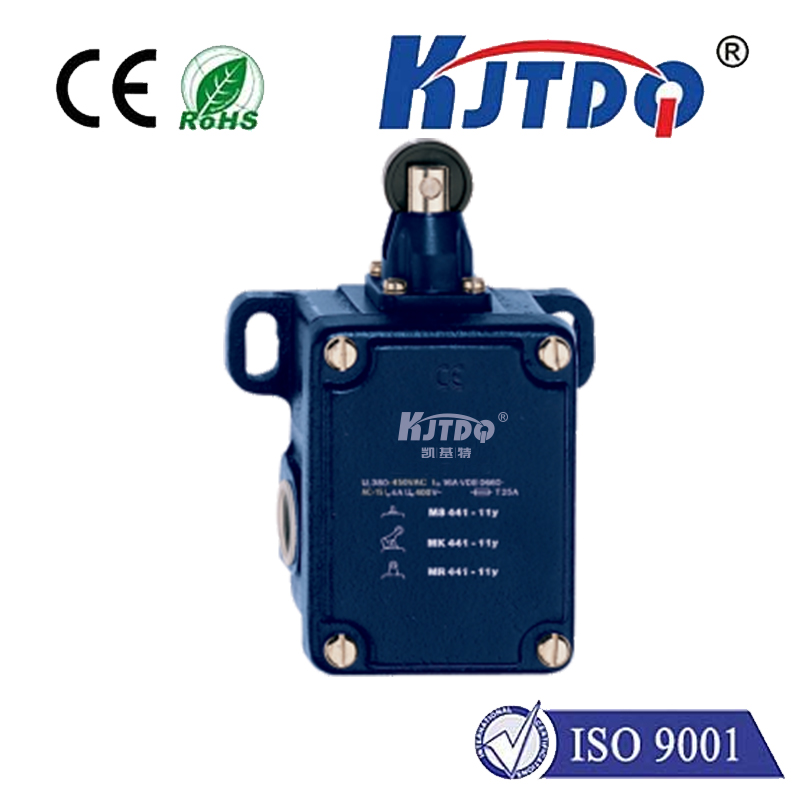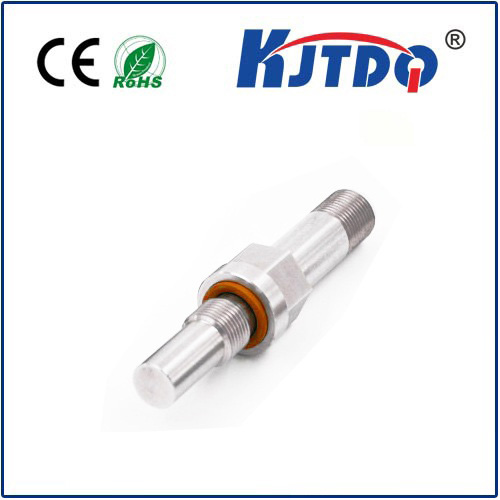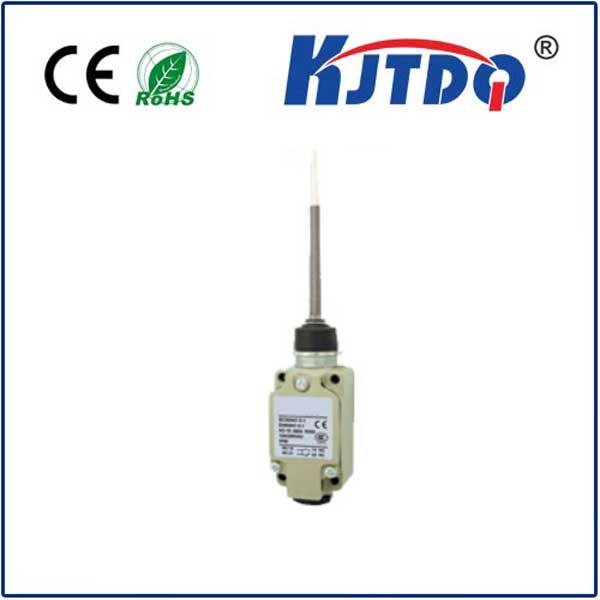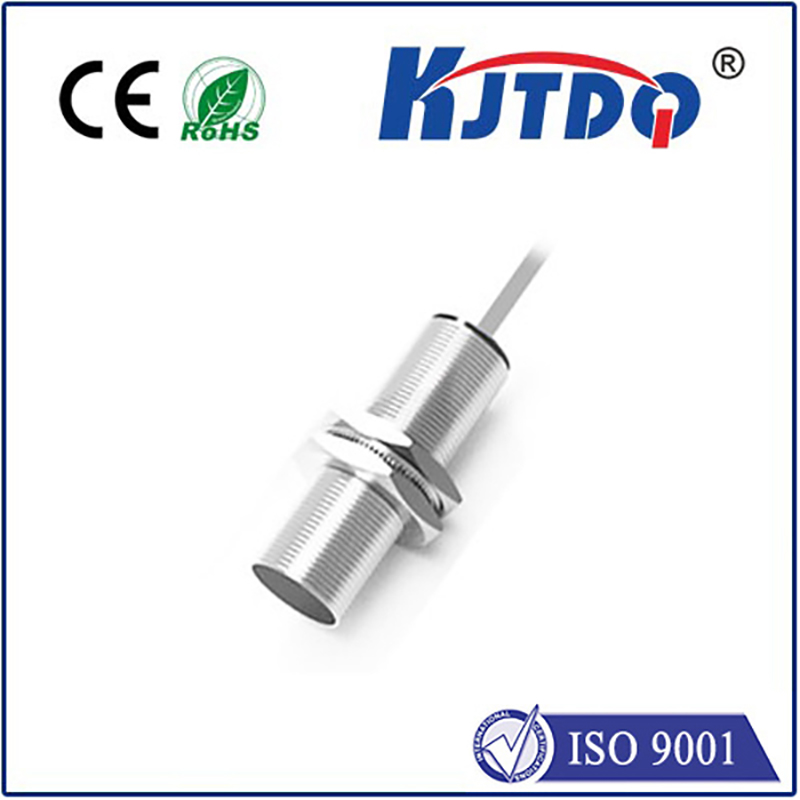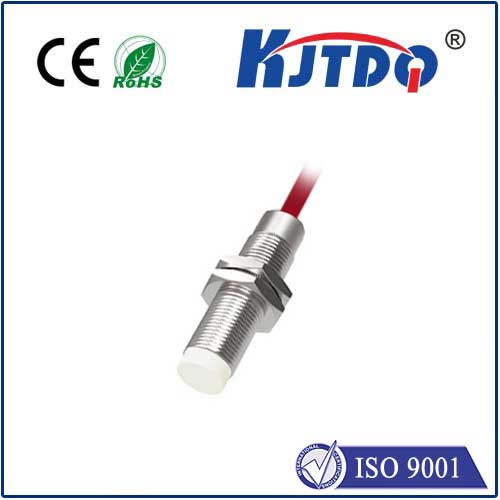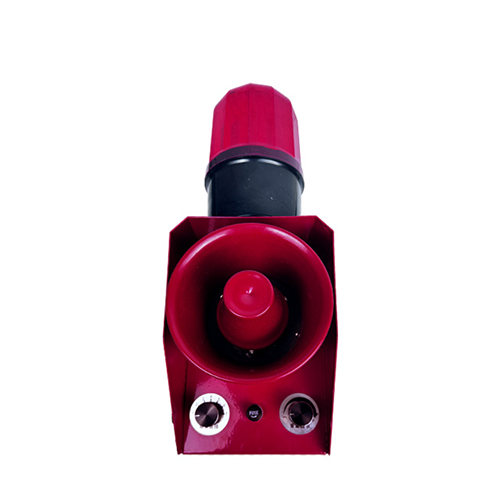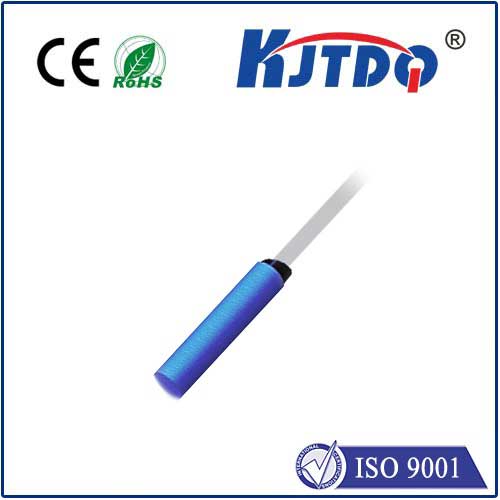

check

check

check

check

check

check

check

check

check

check

In the past, traditional reflective photoelectric sensors had problems such as "short detection distance", "erroneous detection due to the color of the workpiece", and "large sensor body", and had certain limitations in use. The TOF detection principle is adopted to fundamentally change the problem that optoelectronic products are easily affected by target objects.

Compared with traditional photoelectric switches that rely on light quantity feedback to detect objects, the KJT-FG30 photoelectric sensor using TOF technology has the following advantages:
1: More accurate positioning
2: Reduce the interference caused by the color, curvature, environment, etc. of the object surface
3: Switching frequency up to 1000 Hz
4: Can detect transparent objects stably.
5: Not affected by sunlight, can be used outdoors.
6: Achieve longer detection distance (diffuse reflection can reach up to 4 m!! It is the only laser photoelectric sensor on the market)
7: Convenient and easy-to-use operation method allows ordinary models to quickly set two switch points
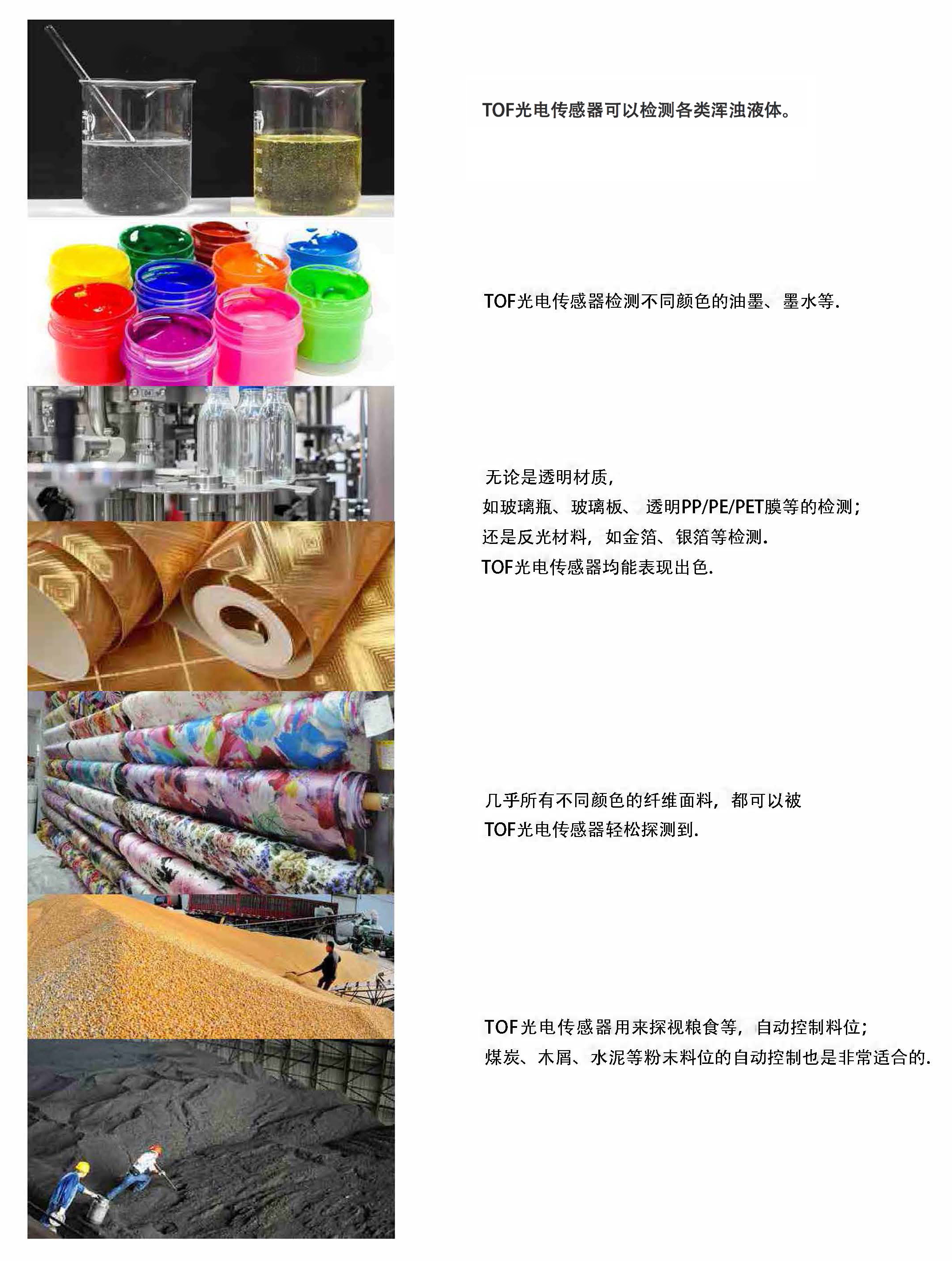

(1) The light source transmitter inside the sensor emits a pulsed laser beam
(2) Measure the time difference between the pulse laser beam reaching the surface of the object being measured and then reflecting back to the sensor receiving chip.
(3) Use the measured time difference and the speed of light to calculate the distance to the object being measured (distance to the object being measured = time difference * speed of light / 2)
(4) Through this distance information, the photoelectric switch can determine whether the object exists within the set range.
·TOF method that can stably detect any workpiece
TOF is the abbreviation of "Time of Flight". This is a sensing method that converts the time difference between the emitted light and the light being received by the workpiece into a distance.

The TOF method measures distance based on time difference, so it is not affected by the color and material of the workpiece. Therefore, stable sensing can be achieved without any adjustments when changing workpieces.
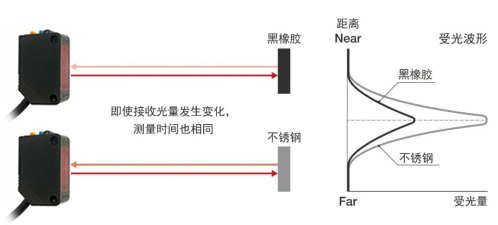
It can sense even a small amount of received light, so long-distance detection is still possible even when low-reflective workpieces such as black rubber are used.

| Operating mode | Switch type | Analog type | Analog quantity with display type |
| Input voltage | 6V~30V(24V) (5VMass customization) | 12V~30V | 12V~30V |
| Measuring range | 2 meter | 2 meter | 2 meter |
| Output type | PNP and NPN output simultaneously, 4-wire system | 4-20mA | 4-20mA RS485. IO-Link |
| Interactive interface | 2 buttons, 2 LEDs | 2 buttons, 2 LEDs | 3 buttons, 3 digital tubes |
| Operating temperature | -25℃~70℃ | -25℃~70℃ | -25℃~70℃ |
| Output capacity | 200mA | 200mA | 200mA |
·Detailed explanation of switching type working mode
switch mode
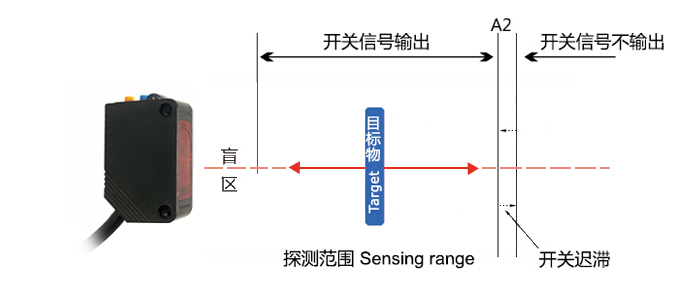
Switch reverse mode
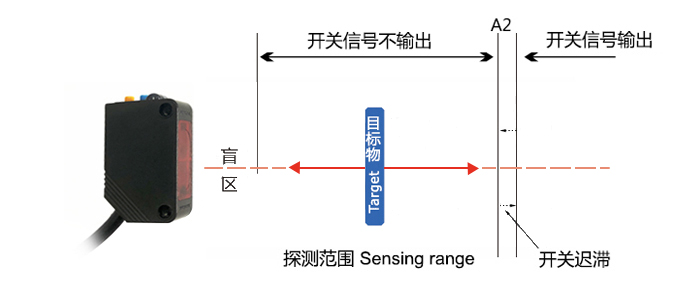
interval pattern
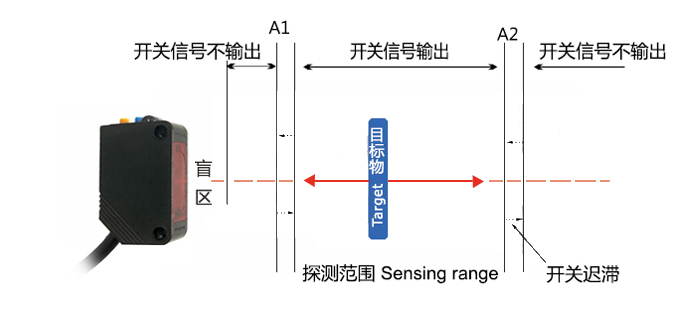
interval inverse mode
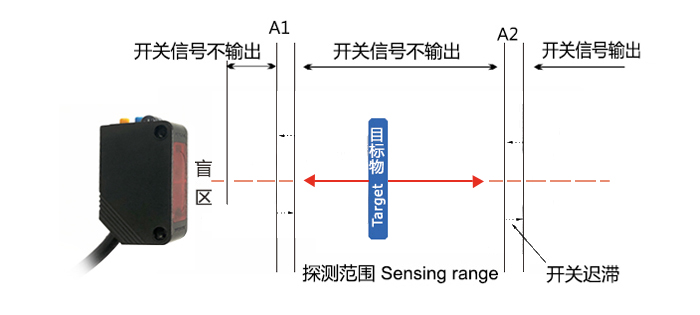
Detailed explanation of analog working mode
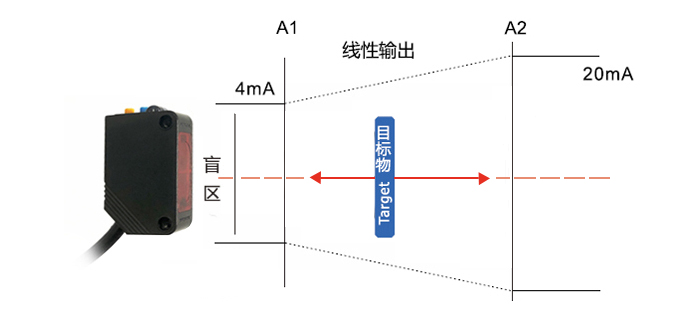
The analog output type outputs 4-20mA current, where 4mA corresponds to the A1 point (default is 0), 20mA corresponds to the A2 point (default is the range 2M), and the position between A1 and A2 changes linearly. The A1 position and the A2 position are not far or near.

TOF photoelectric sensors exhibit excellent performance in non-contact positioning and distance measurement applications.
It is not affected by color and shape, and is not limited by the material of the target being measured. It is widely used in industrial control automation scenarios. Listed below are some typical applications in industries.
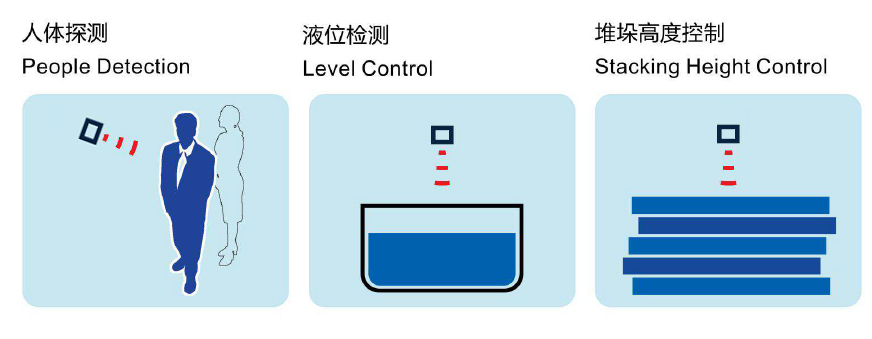

Only one product can be used to build branch and converging handling lines
KJT-FG30 detects by setting a distance, so it is not affected by color or material, saving evaluation and adjustment time when replacing workpieces. In addition, compared with the through-beam type and retro-reflective type, the number of installation workers is reduced by half (1/2), thus shortening the production cycle.
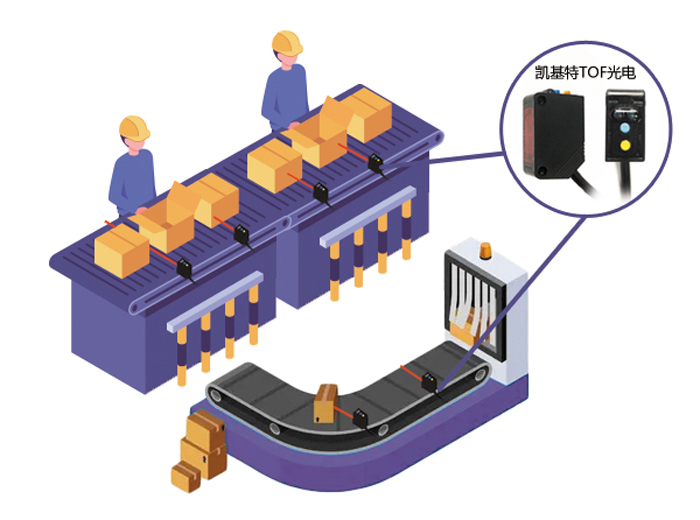
▲One product builds branch and converging handling lines
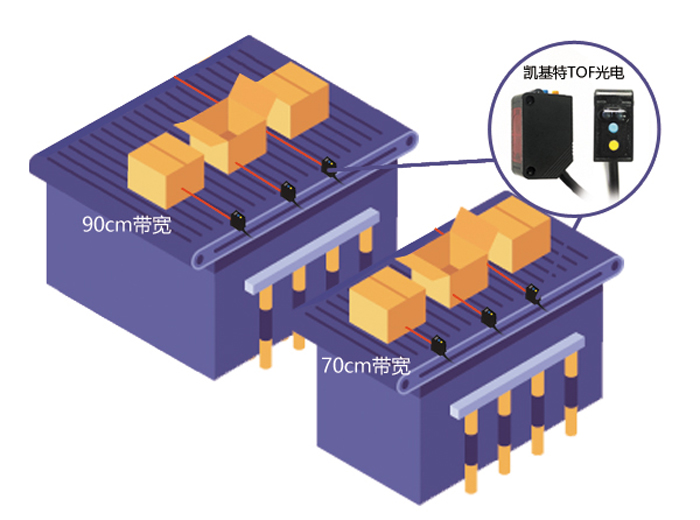
▲ Wide sensing distance for various conveyor line widths
In the past, different sensors were required for different detection distance requirements. However, KJT-FG30 has a wide sensing distance of 30-4000mm, which can meet the needs of different sensing distances without switching sensors.
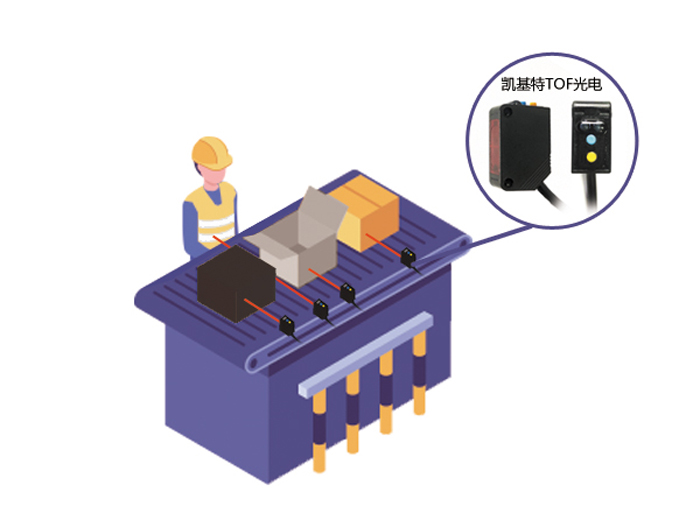
▲ TOF method without restrictions on workpiece transportation
In the past, prior evaluation was often required when switching inspection workpieces. However, the EKJT-FG30 can sense workpieces with different colors and materials by setting the distance, thereby saving evaluation and adjustment time. In addition, workers near the production line will not be mistakenly detected.
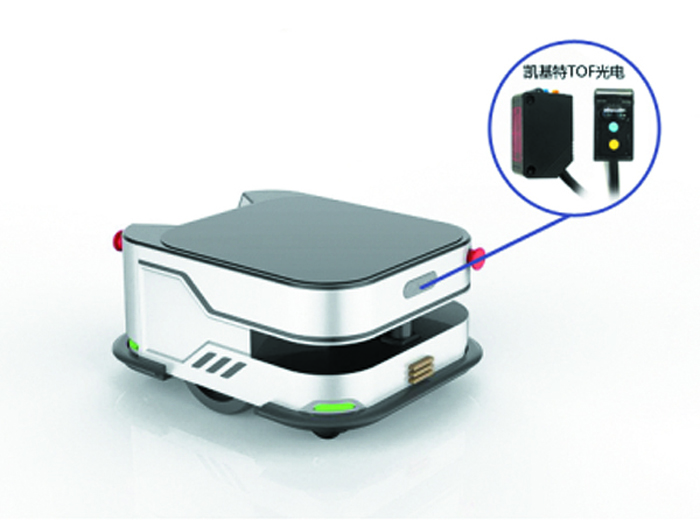
▲ Small size, can be installed in AGV
Until now, long-distance reflective sensors have been larger in size and limited in their mounting location. The KJT-FG30 has achieved ultra-miniaturization, which helps achieve greater design freedom because it can be installed in a variety of places.
Eliminate assembly line installation constraints
If a sensor is installed in the assembly area, the collision between the tool and the workpiece may cause the sensor to malfunction or the optical axis to shift, causing false detection. However, the KJT-FG30 can realize detection outside the assembly area through long-distance detection, thereby reducing unnecessary line stops. In addition, its miniaturization eliminates restrictions on installation locations.
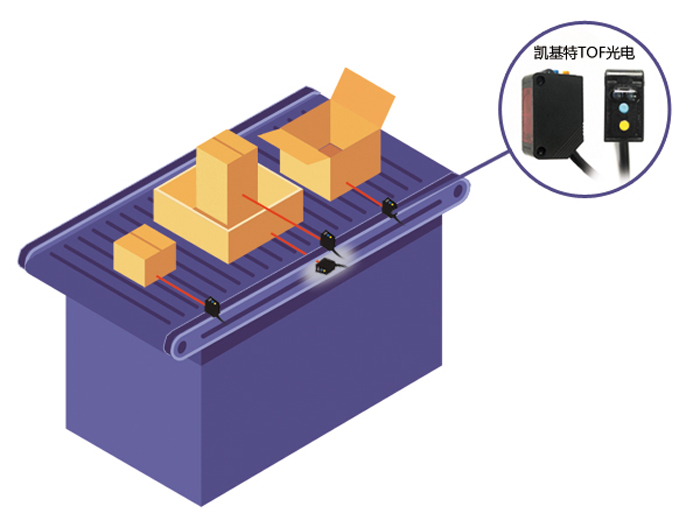
▲ Wide sensing range can handle inspection workpieces of different sizes
In the past, once the distance between the sensor and the detection workpiece changed, the sensor type and installation location had to be changed accordingly. However, the KJT-FG30 has a wide sensing range of 30-4000mm. Even if additional detection workpieces are added, it can be used directly without replacing the sensor.
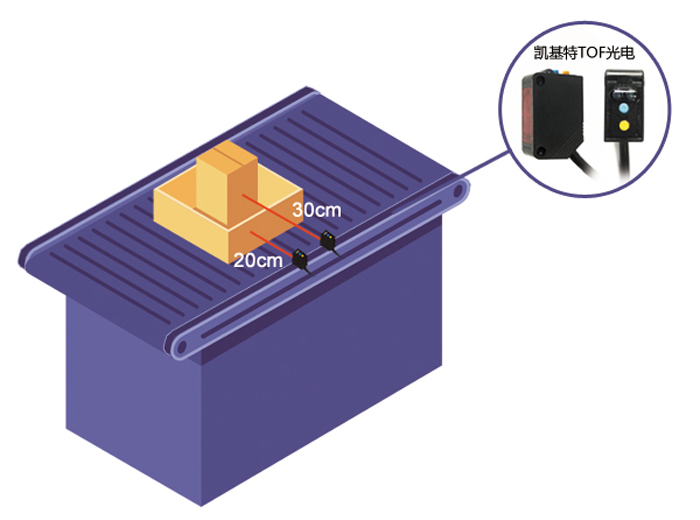
▲ TOF method that is not limited by inspection workpieces
In the past, prior evaluation was often required when switching inspection workpieces. However, KJT-FG30 can sense workpieces with different colors and materials by setting the distance, saving evaluation and adjustment time. In addition, even if the color of the workpiece changes due to dirt on the surface, the detection can still be performed stably. Workers near the production line will not be mistakenly detected.
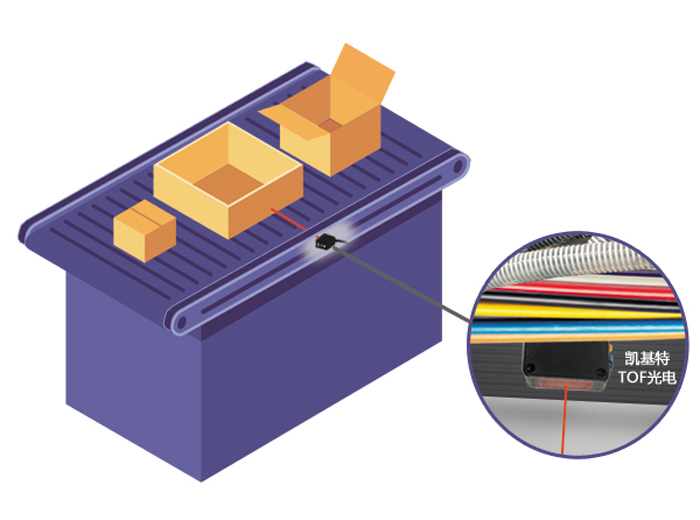
▲ Compact body design that is not limited even in small spaces
In the past, when adding sensors, due to space constraints, it was often necessary to modify the production line. However, the KJT-FG30 is not restricted by the installation location, making it easier to add sensors.
